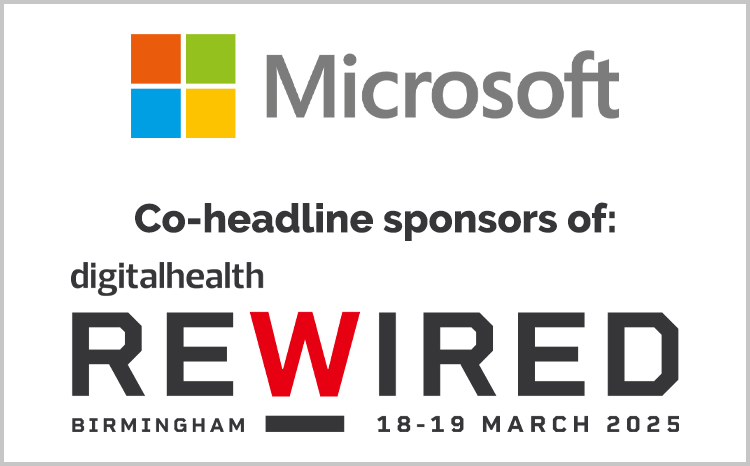Microsoft in the NHS
- 14 April 2005
 Jon Hoeksma
Jon Hoeksma
Microsoft is one of the key technology firms in the £6.2 billion NHS IT programme. It is working particularly closely with iSOFT on the development of Lorenzo, the core clinical solution due to be provided to three-fifths of England. This new system, being built on Microsoft’s .Net web services technology, is planned to seamlessly integrate with core Office applications.
In a parallel development, last November Microsoft extended its control of the NHS desktop market by signing a £500 million Department of Health corporate deal for 900,000 user licences.
As part of the deal Microsoft committed to a £40 million research to develop a health specific user interface (UI) for clinical systems that will be used across the NHS. The first version of this NHS-specific user interface, which all clinical application vendors will be expected to use, is due to be delivered later this year.
"You have to provide ubiquitous and intuitive user interfaces of the kind that people have come to expect in all spheres of life, such as booking and buying airline tickets," explained Dr Bill Crounse, Microsoft’s Global Healthcare Industry Manager. He said these will be highly intuitive and provide access to information and applications, from a range of devices such as PDAs, tablets, and smart phones.
Freeing information
Only by providing information in a highly intuitive easy-to-use way will it become usable by the full range of health professionals, and not just computer enthusiasts. "A hospital nurse is often a person in their 50s who just did not grow up with computers," points out Dr Crounse. "Microsoft is about commoditising fantastic technologies, and showing users how they can get more and more benefit out of them."
Dr Crounse stresses that every hospital is very different and has different requirements and systems, which has historically required expensive local configuration. "One of the main challenges hospitals have is that even when they buy a solution from a vendor it still needs a lot of expensive reconfiguration, which can take 12 months and cost hundreds of thousands of pounds." He said the aim is to move to an environment where systems can be delivered much more rapidly, flexibly and cost-effectively.
But the crucial first step is to free patient information so that it is accessible to clinicians as they move around. "You really need some ways to bring systems together for when clinicians move from one sector to another," argues Dr Crounse. "The keys to do this will be providing standard UIs, and using web services that can free data from existing legacy systems to provide easy to use information tools for clinicians and patients."
Through the use of web services and XML you can create this environment, where information can be opened up and made interoperable, says Dr Crounse: "You can then take data out of disparate legacy systems and create a common users interface based on role and workflow."
"Portals on steriods"
|
"The challenge in the UK, US and around the world will not be the technology but taking that leap and overcoming behavioural barriers"
— Dr Bill Crounse, Global Healthcare Industry Manager, Microsoft |
Microsoft’s Health Global Industry Manager says that the objective is to create personalised views of data from different systems. He points to MSN.com, with its ability for users "to configure and arrange information" in the way they want to see it, as an example of this approach in action.
He says that the UK will provide a key proving ground for applying this approach and technologies such as XML BizTalk to healthcare, with the NHS providing "the first opportunity to see what that interface will be".
"We’re already doing a lot of work on this, with portals on steroids if you will," Dr Crounse jokes. He says that this approach also provides the basis for sophisticated self-service health applications "enabling patients to go to portals and do their own prescription refill requests, view tests results and even view parts of their record."
Having unlocked data from legacy systems, he says the next step is to seamlessly integrate this data with what Microsoft describes as personal information tools, such as familiar Office applications. "The real challenge, and this is where the NHS may be one of the first in the world, is integrating this data with personal information tools to provide real-time information in highly usable forms."
Once this has been achieved Dr Crounse says that it becomes possible to "provide real-time glimpses of business processes and patient treatment", in familiar Microsoft Office applications such as Word, Outlook and Excel.
In addition to this, Dr Crounse, whose career has included journalism and broadcasting, points to the potential of new collaboration tools. "Office Live Meeting allows a clinician to collaborate with 100 or 1,000 colleagues and share information and data with others, all from their laptop." He said that when he was a broadcaster the same capability took an entire multimillion dollar TV studio.
"Clinicians must be part of solution"
Drawing on his background as a hospital doctor who has successfully led implementation of clinical systems Dr Crounse stressed that great technology does not guarantee a success: "We are all extremely proud and engaged with what is going on in the UK. But I share a concern that the challenge in the UK, US and around the world will not be the technology but taking that leap and overcoming behavioural barriers through change and change management.
"I would encourage those funding and managing the project not to forget the importance of change management and ensuring clinician support because mandates never work in healthcare."
Microsoft’s Global Head of Healthcare concluded: "Mandates never work if clinicians are not part of the solution. The best solutions I’ve ever come across are not about IT but the enthusiasm and commitment of end users."
But the UK has an excellent basis to build on, stresses Dr Crounse, pointing out that electronic medical record usage in primary care is already above 90%. "In the US it’s more like 15% and remains very much a paper world."




